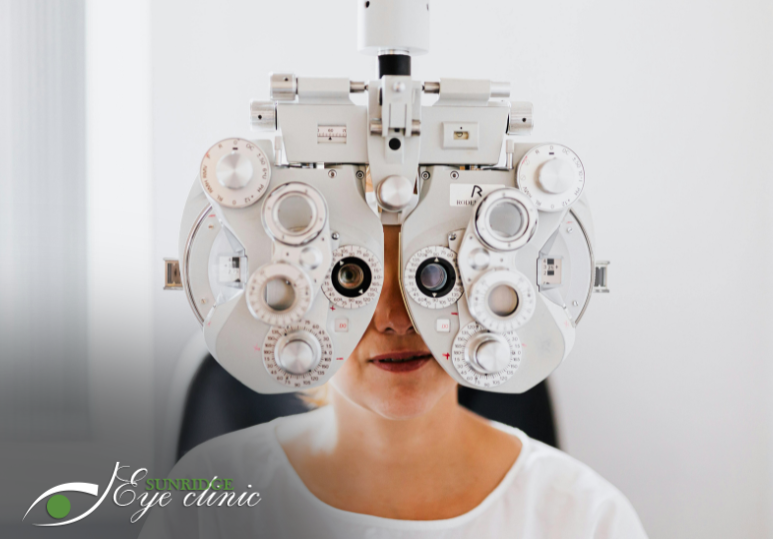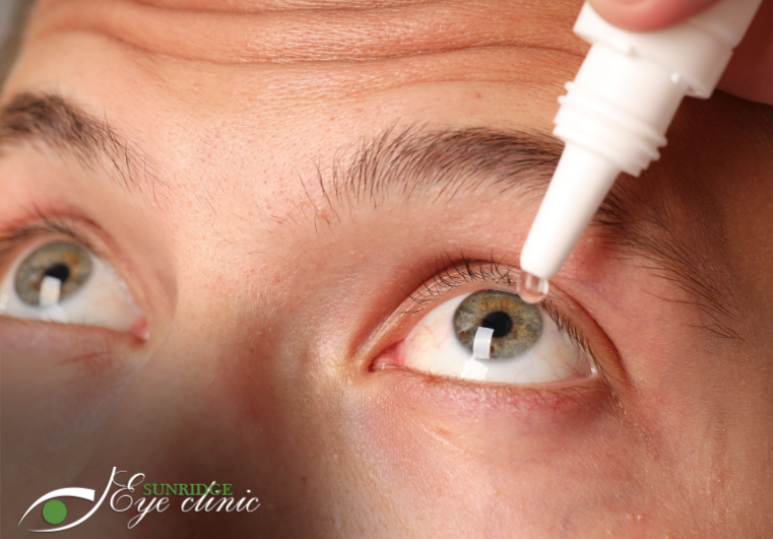How Your Optometrist Tests For AMD
During a comprehensive eye exam, your optometrist will use a variety of tests to view parts of your eye to monitor your eye health. They will also use various tests to check your vision. If your optometrist suspects you have AMD or if you are at risk of developing AMD, they may perform additional tests or examinations, such as these.
Optical Coherence Tomography
Also referred to as an OCT scan, this technology is used by your optometrist to detect new blood vessels, hemorrhaging, drusen, and retinal structure changes within the eye. An OCT scan takes cross-sectional photographs of your eye using infrared light waves to create a detailed image of the layers of your retina for your optometrist to examine.
Dilated Eye Exam
Dilating eye drops make your pupils remain open so that your optometrist can see into the eye with ease. Dilating eye drops do not hurt the eyes, but they can make your eyes sensitive to light, as the pupil normally contracts when exposed to light. If you have a dilated eye exam, arrange for someone to pick you up from the optometrist as driving with dilated pupils can be dangerous.
Fluorescein Angiography
This diagnostic exam uses a fluorescein dye that is injected into the bloodstream. The dye will travel to the blood vessels in your eye and photos will be taken so that your optometrist can view any abnormal blood vessels or leaks.
Amsler Grid Test
The premise of the Amsler grid test is simple: you are shown a grid with a dot in the centre and you focus on that dot. If you are beginning to develop AMD, the lines of the grid will appear warped. While this is a test your optometrist may administer in office, you can also perform this test at home by printing out an Amsler grid and viewing it with one eye covered, and holding the grid between 30 and 40cm away (if you wear eyeglasses, keep them on for this test). Repeat this with your other eye covered. If you notice the lines become warped or wavy, call your optometrist.
Want to learn more about AMD? Read AMD Awareness Month: The Facts About Age-Related Macular Degeneration.
Visit An Optometrist If You Suspect AMD
AMD develops most commonly in people over the age of 50. If left undiagnosed, AMD can severely impact your quality of life and can cause partial blindness, limiting your ability to drive, read, identify faces, and perform other tasks that require central vision. If you are 50 or older, scheduling annual eye exams can help you catch any AMD development early. The earlier AMD is diagnosed, the sooner your optometrist can develop an AMD management plan to treat AMD and slow the progression of this condition. To schedule an eye exam with a Sunridge Eye Clinic optometrist, call 1-403-280-7518 or fill out the online contact form and take control of your eye health.
FAQ
Q: Can I see for myself if my retina or macula shows any signs of damage?
A: No. It’s impossible to examine your own retina. You will need to have a comprehensive eye exam from your optometrist, who will typically dilate your pupil to get a clearer view of your retina. Only your eye doctor can diagnose AMD.
Q: Is AMD painful?
A: No. AMD doesn’t cause any pain. In fact, in its early stages, AMD might not even present any symptoms. That’s why regular eye exams with your optometrist are so important. A painful eye can be due to several other conditions and should be addressed by your eye doctor immediately.
Q: Can AMD be cured?
A: There is no cure for age-related macular degeneration. However, there are treatments available that will slow the progression of the disease and lower your risk of severe vision loss. Talk to your eye doctor about the best way to manage your condition.






